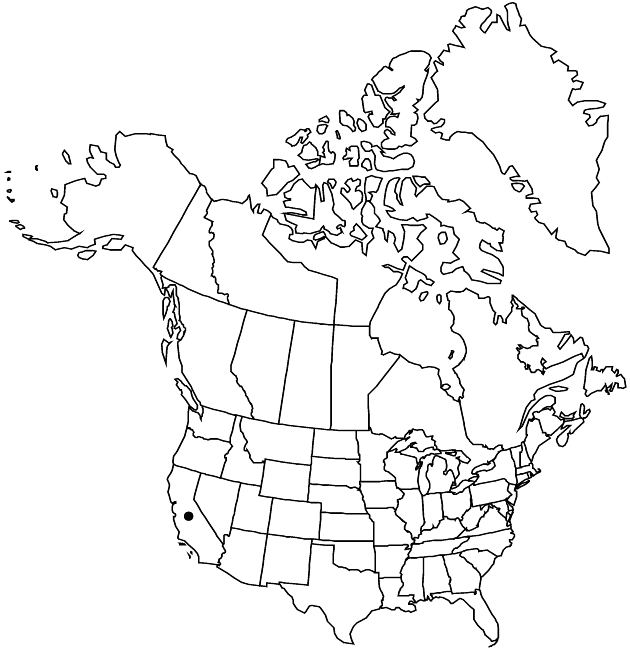Deinandra corymbosa
Novon 9: 468. 1999.
Annuals, 6–100 cm. Stems ± solid. Leaves: proximal blades pinnatifid, faces ± hirsute to villous and sometimes stipitate-glandular. Heads in corymbiform, racemiform, or paniculiform arrays or in glomerules. Bracts subtending heads often overlapping proximal 0–1/2+ of each involucre. Phyllaries evenly stipitate-glandular, including margins and apices, with nonglandular, non-pustule-based hairs as well. Paleae in 1 series. Ray-florets 15–35; laminae deep yellow, 4–8 mm. Disc-florets 24–70, all functionally staminate; anthers reddish to dark purple. Pappi 0, or coroniform (irregular crowns of entire, erose, or laciniate scales 0.1–0.9) mm. 2n = 20.
Phenology: Flowering Mar–Nov.
Habitat: Coastal grasslands, openings in coastal scrub or woods, dunes, disturbed sites (e.g., fallow fields), sandy or clayey soils
Elevation: 0–600 m
Discussion
Deinandra corymbosa occurs on the Central Coast and the Northern Coast and in the Outer South Coast Ranges and San Francisco Bay area. Plants with relatively large heads in glomerules from the Central Coast south of Big Sur have been treated as subsp. macrocephala; no subspecies are recognized here because of wide variation in head size and arrangement along the Central Coast north and south of Big Sur.
Selected References
None.
